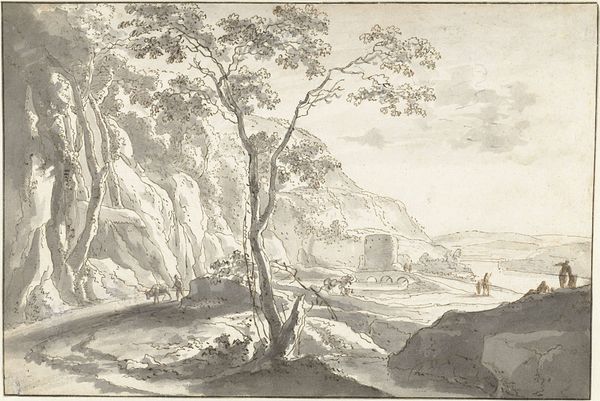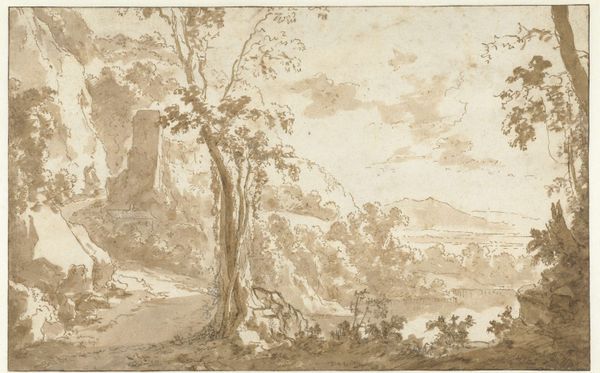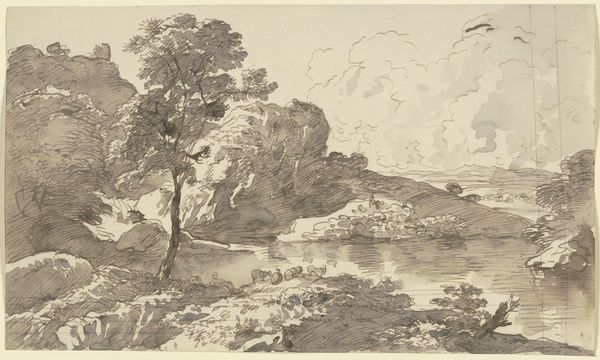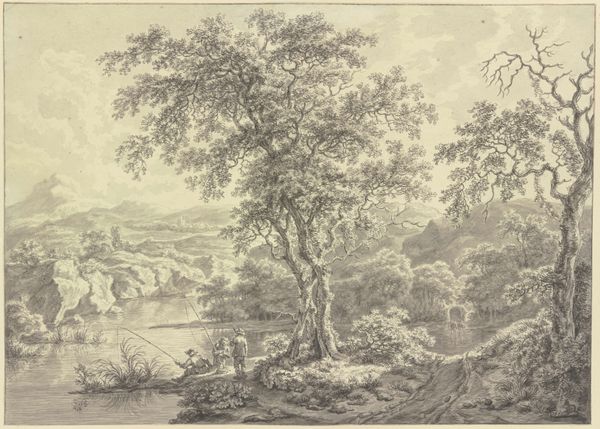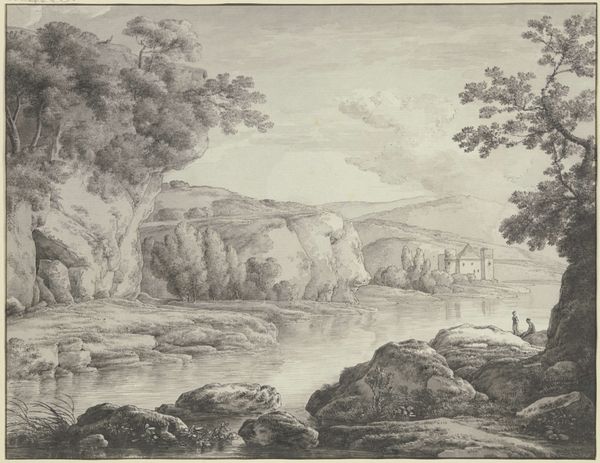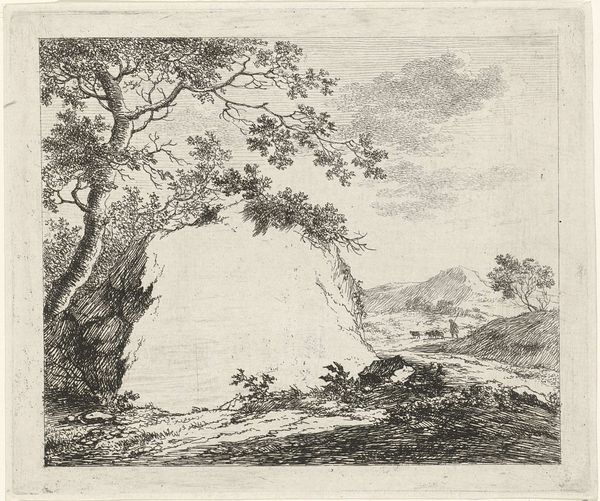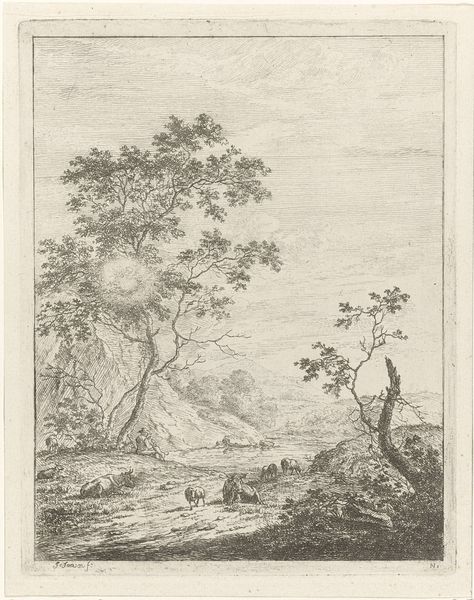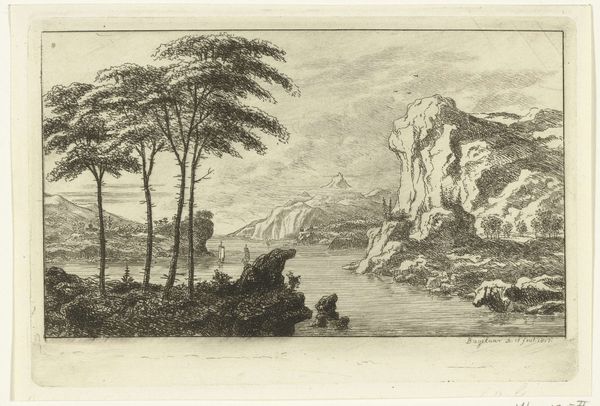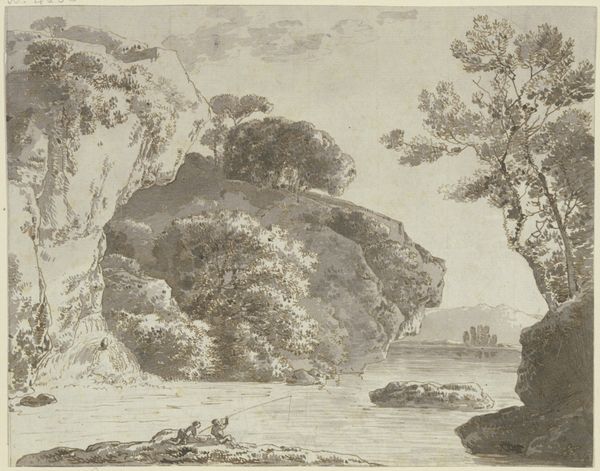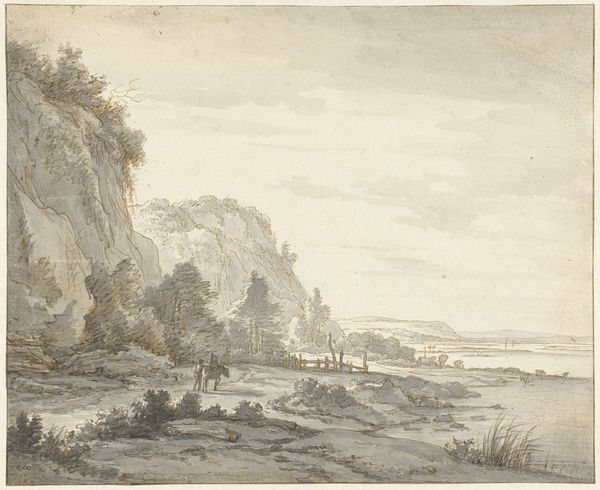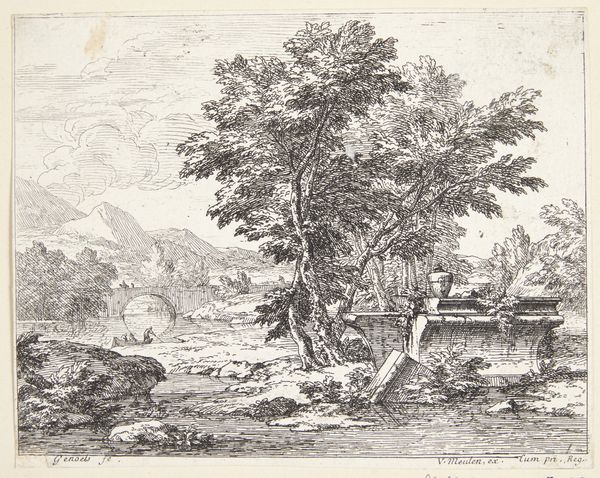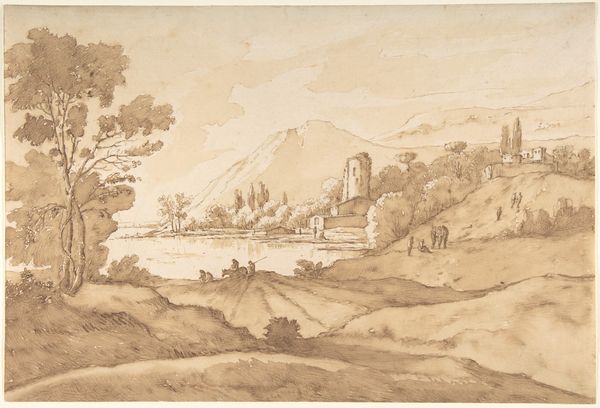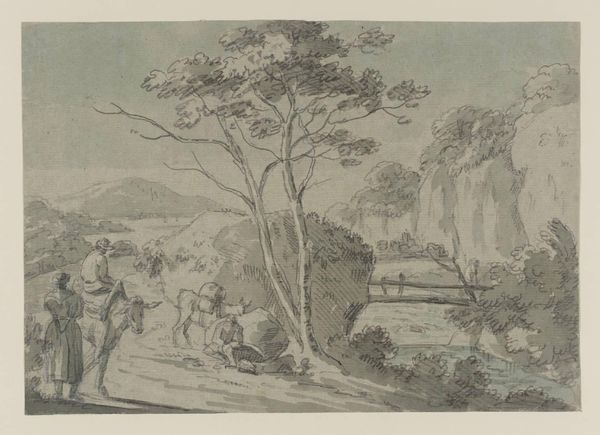
drawing, graphite
#
pencil drawn
#
drawing
#
dutch-golden-age
#
pencil sketch
#
landscape
#
pencil drawing
#
graphite
#
watercolor
#
realism
Dimensions: height 315 mm, width 412 mm
Copyright: Rijks Museum: Open Domain
Editor: Here we have Jan Both's "Italiaans landschap," created sometime between 1628 and 1652. It's a drawing, seemingly in graphite and maybe watercolor on paper. There's such a tranquil mood to this landscape; I'm drawn to the layered composition and soft light. What do you see in this piece, from your perspective? Curator: Looking at the process is key here. Consider the materiality: graphite and watercolor. They are easily transportable. The paper support itself points to the artist’s mobility, suggesting sketches *en plein air*, directly engaging with the landscape as raw material. Editor: So, the ease of use of the materials connects directly to the artist's experience? Curator: Exactly. Both, like many Dutch Golden Age artists, travelled to Italy. But why? What material conditions allowed for this? We have to consider the burgeoning art market back in the Netherlands. Demand for Italianate landscapes fueled production. These sketches weren’t just aesthetic exercises. Editor: You're saying it's not just about pretty scenery; there's a business aspect to it as well? Curator: Absolutely. Both was producing a commodity. Consider how these "pencil drawn" or "pencil sketch" landscape artworks entered the collectors' hands, their display settings. The labor involved is worth mentioning; artistic workshops, and how landscape artistry played a part in cultural and economic consumption. The materials and process aren't separate from the social and economic context. Editor: That’s a great point. I was so focused on the artistic aspect, I didn't consider the full picture of material production and market demand behind this “sketch”. Curator: Exactly. It's about deconstructing that divide, understanding the networks of production and consumption. Editor: I'm definitely going to view landscapes differently now. It makes you think about the who, how, and why, instead of just the what!
Comments
No comments
Be the first to comment and join the conversation on the ultimate creative platform.
